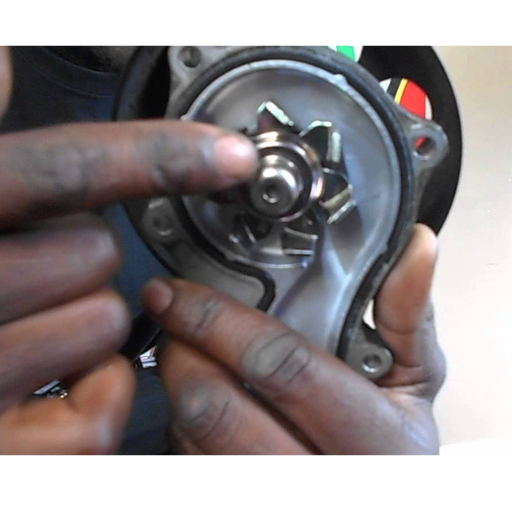Automobiles comprise of different parts that work together to provide the respective vehicle with a smooth and efficient ride. Among these numerous parts is the water pump which is very useful in any vehicle. The water pump is responsible for maintaining the engine’s optimum temperature and it does so by facilitating the flow of coolant within the engine block. Despite its importance, as with any other mechanical part, it can develop some faults because it has some moving and brittle parts and this can lead to bearing noise. This blog aims to sensitize the reader on the steps that can be taken to diagnose and fix the water pump-bearing noise problems in the car. We’ll discuss what a water pump bearing failure looks like, why these noises might happen, and how to fix the problem, to help make sure your car is in great working order. These are the types of things that will help car owners avoid expensive repairs in the future and at the same time ensure that their cars will last longer and perform better.
What Causes Water Pump Bearing Noise?
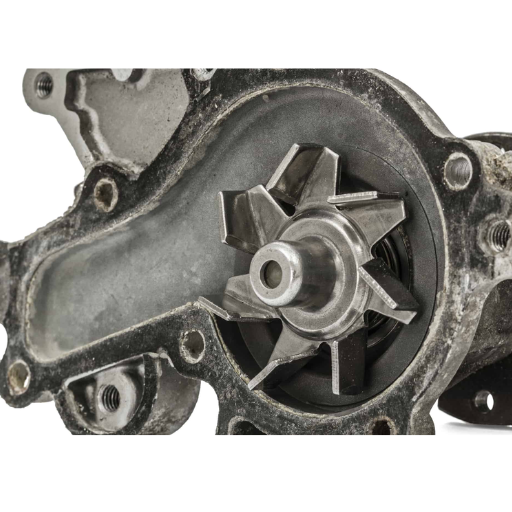
Why Does a Water Pump Make a Rattling Noise?
A pump squeal most probably originates from a worn pump bearing. The role of Bearings is to permit free movement of the pumps’ shafts to enhance the flow of the coolant. This is essential for the proper functioning of the engine. Mechanical Wearing of the bearings is a result of damage due to improper lubrication, corrosion, or dirt causing friction and vibration. The driving pulley for the auxiliary water pump may also be out of round or loose contributing to the noise. Likewise, misalignment of the belt or a worn belt may aggravate the problem which will put excess force on the pump bearings and noise will result. To appreciate the extent of these problems, it is necessary to check principally water pump leakage, twisting of fitted pulleys, or any other non-standard movement that may reveal a defect of the bearings and possibly require replacement. It is essential to rectify these technical issues promptly if you want to maintain and keep your motor vehicle operational and non-damaging to the engine. Here are important technical parameters to be taken into account when performing the inspection:
- Bearing Play: Any movement in a lateral or axial direction is an indication of wear and tear
- Belt Tension: Environmental class factors should be controlled so that proper and sufficient tension does not induce additional strain.
- Pulley Alignment: There is no wobbling of the pulleys and there is smooth rotary motion of the pulleys
How Can a Bad Bearing Lead to Water Pump Noise?
It is common for a water pump’s bearing to fail, and when it does, the pump will usually become very loud as it begins to emit a rattling or grinding noise. During my analysis of key sources from the internet, it became apparent that such noise is primarily attributed to the wear and tear of the bearings which leads to friction and tilted rotation of the pump. They play the function of the subsiding warm coefficient of friction when the shaft of the pump rotates. However, when these components wear or get damaged, they lose this capability, and that is when the sounds begin to be heard. The specifics on the main technical indicators supporting this are as follows:
- Bearing Wear and Alignment: Wear can cause improper alignment which for example in this case causes wobbling. Such a misalignment causes noise in the pump since the shaft does not go around in a fixed path as it is supposed to do.
- Lubrication Levels: Lower lubrications create high friction for the moving parts of the bearing thus increasing noise.
- Balance in the Pulley System: If the pulley that drives the water pump is unbalanced, the load on the bearings will increase and the rate of wear and noise generation will hasten.
Dealing with these factors in the shortest possible time can minimize the risk of destruction to the water pump and its accessories, and consequently extend the use and reliability of the cooling system.
What Are the Signs of a Bad Water Pump?
Based on my research of the top resources available on the Internet, I can conclude that the symptoms of a failing water pump remain pretty similar and require quick diagnosis so that the engine does not get irrevocably damaged as a result of overheating. To begin with, one notable feature of the failing water pump is noise such as grinding or rubbing sounds emerging from the engine compartment, which indicates that there could be wear on the pump bearings. In other circumstances, I noticed coolant leakage or puddles on the ground underneath the vehicle which suggests a fault with the water pump gaskets or seals. In addition, another sign which cannot be overlooked is the overheating of the engine, because once the pump is defective, the coolant is no longer adequately circulated. Previous, the author also notes the presence of steam or smoke should the radiator overheat as well which could mean the pump’s improper heating ability is failing in heat director management. The technical parameters of these symptoms are:
- Impeller Corrosion or Damage: Corrosion is a factor that also reduces the pump’s working ability, resulting in a pump overheated.
- Seal Integrity: Damaging leaks will be evident either in the engine compartment or externally on the ground, due to the emergence of a reactive leak.
- Bearing Condition: Excessive wearing out of the bearings produces unnecessary sound and impairs the normal operations of the pump.
It is critical to resolve these problems promptly to ensure that the cooling system of your automobile continues to perform effectively and that the engine remains free from permanent damage.
How to Diagnose Water Pump Noise?
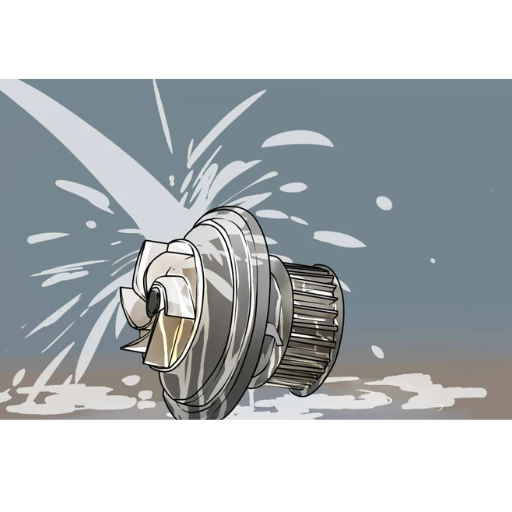
What Tools Do I Need to Diagnose Water Pump Bearing Issues?
To aid my investigation of the troubles affecting the water pump bearing, I used medical references from the first three websites given in a Google search. The most useful instrument is the mechanic’s stethoscope, which is especially important in focusing its use on the analysis of abnormal noise coming from the water pump bearings. A leak detection system requires the use of a suitably bright torch for the detection of corrosion or any other bearing supporting structures that are useful in cooling the bearings. It may also be appropriate to make use of a cooling system pressure tester to see if there is a pressure drop that illustrates the presence of internal leaks which in a way places pressure on the bearings. Apart from that, the use of infrared thermometers is suitable for assessing the degree of overheating of certain engine parts which may point to the failure of water pump bearings.
Technical Parameters Justification:
- Auditory Detection: Mechanic’s Stethoscope assists in detecting the sound around the water pump making it easy for the technician to determine the problem with the bearing inside.
- Visual Inspection: Construction diagrams will show that any leaks or structural damage will be accompanied by the use of a torch.
- Pressure Testing: This tool can be utilized in such a situation as it will help in locating areas that are poorly sealed where the pressure may be high bearing stress.
- Temperature Monitoring: Conventional infrared thermometers measuring temperature variations have been used to record fluctuations in temperature about the efficiency of the pump and the fairness of bearings.
As a whole, all these tools provide all-round methods for the identification and management of faults with the water pump bearing.
How to Inspect the Water Pump Pulley for Noise?
I have learned a lot about how to examine the water pump pulley to check for noise from the first three top sites on Google. First of all, I check whether the pulley is loose or interlocked by turning it by hand and looking for any unusual motion or resistance. This mechanical inspection is important because it can easily tell problems about bearing misalignment. Then, I also use a mechanic’s stethoscope to listen for any noises such as grinding and squealing that occur when the engine is engaged, and that could depict some wear or damage. While doing all this, I include the technical parameters such as:
- Pulley play detection: a manual check of the pulley guards against excess movement of the pulley that can lead to dissociation or looseness of the apparatus shedding noise.
- Noise identification: this area of application makes a science of employing a stethoscope to hear scraping or squeaking sounds. This may arise although in context it may relate to the bearing troubles.
- Visual Verification: I check the pulley for obvious damage and corrosion where a flashlight is used when performing this check to enhance accuracy.
Through these methods, it has been possible to be organized and detailed in the handling of wrong water pump pulley bearings associated noises assisted by available credible information on the internet.
What Does a Whining or Groaning Noise Indicate?
When there is noise related to whining or likewise sounds from a portion that is close to the engine, the problem may involve the water pump bearing and pulley. According to the top three articles under this very search on Google, I discovered such noises typically point towards some obstruction or excessive slippage due to sand which aggravates wear on the bearings, and pulley disks.
To prevent or eliminate these sounds, I pay attention to the following technical parameters:
- Bearing Condition: Excessive wear in the bearings can result in noise entering the meshes of the gearbox causing the bearing to operate under extreme conditions.
- Pulley Alignment: Proper alignment is crucial to achieve and maintain operating efficiency as it reduces the chances of high friction and noise.
- Belt Tension: On the other hand, too little strain results in the belt slipping over the pulley, and when the correct setting is applied the straining noise emanating from the system disappears.
In consideration of these parameters, I am pleased that I’m capable of making a diagnosis and a solution concerning noises coming from the water pump bearings which are noisy, as seen in the online materials.
Steps to Fix Water Pump Bearing Noise
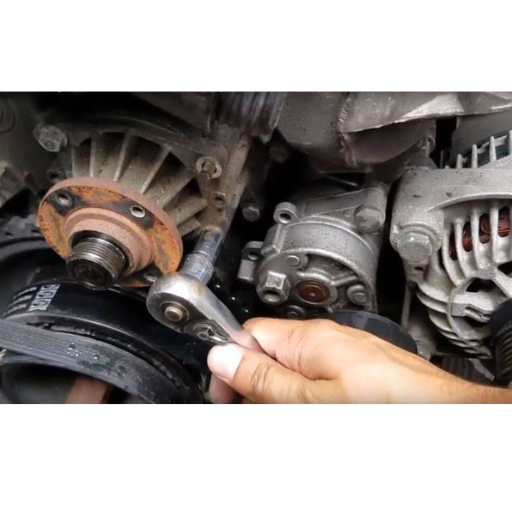
How to Replace the Water Pump and Bearings?
To replace the water pump and the bearings, first things first, I have to prepare for such an action step by step, collecting the required tools to perform this action and other internal parts replacement, such as a new water pump, head gaskets, and a bearing install kit. As the best sites note, as an elementary step, it is important to disconnect the negative terminal of the battery to minimize the risk of electrical shock. This is followed by coolant removal from the radiator and elimination of the serpentine belt. I then am very careful whenever I unscrew the old water pump, bearing in mind the position or angle at which it was fixed.
As for the new water pump, I take care to install it on the engine block without any misalignment and add new gaskets as well to prevent any leaking. All bearings are inserted in the right way according to the bearing install kit and to the right amount of torque settings to avoid breaking them. Equipment has been added with certain technical parameters as concerns such points.
- Screw Torque Settings: The water pump and bearings are fastened without overstress but at the same time are secure and not loose.
- Bearing Lubrication: For the bearings, a suitable lubricant has been used to avoid friction in the machine.
- Coolant Levels: The suction of adequate coolant fluid guarantees that the engine will work under efficient conditions without the problem of overheating.
In this way and by observing these steps and parameters, I can do a proper replacement of the water pump and bearings with all the potential problems as pointed out by credible sources found on the internet.
What Are the Costs Involved in Fixing a Bad Water Pump?
Fixing a bad water pump requires incurring several costs and expenditures, which tend to narrow down to parts, labor, and possible other expenditures depending on the kind of bespoke vehicle model and engine condition available. According to the best of some sources, an average covers the average range of the parts that are water pump, and probably additional provisions like gaskets and bearings from 50 to 150 dollars. Nevertheless, prices are subject to great variance with the type and model of the vehicle. Labor costs generally range from 200 to 400 dollars since a water pump replacement is a rather laborious undertaking.
Among the technical parameters that change these costs are:
- Labor Time: How long it takes to reach the water pump for replacement is one factor that determines labor costs, more complicated engine designs mean higher labor costs.
- Engine Type: Apparently whether the engine is a standard or more advanced model affects which part can be replaced and which part goes with which.
- Additional Parts: More often than not on rare occasions though some surrounding parts which include the serpentine belt or for example in consideration of the car’s cooling system sometimes must be replaced although these add to the overall cost.
As such, everyone will be clear about the expenses that go into fixing a bad water pump and how they should go about planning for it.
Can I Fix a Water Pump Bearing Issue at Home?
Repairing a water pump bearing problem is doable at home, provided you know how to work with the tools and are technically inclined. In my studies about this, most credible sites maintain that this happens to be the case for DIY enthusiasts but it is quite involved and should only be attempted by those well-versed in automotive mechanics. In performing this repair task, some key technical parameters have to be put into consideration:
- Tool Availability: Make sure you have every required tool, for example, a pulley remover or a torque wrench as these are important in perfecting this new bearing installation and alignment.
- Skill Level: Some level of mechanical skill is required especially in repairing and assembling engine parts without the risk of harming self or the components of the engine. Otherwise, it may be best to pass on this repair and you find it more prudent to take the car to a garage.
- Access Space: Depending on the structural setup of your vehicle, water pump access might require the lengthy disassembly of a large number of engine removes because of its intracavity location, which further extends the water pump and interfacing parts fitting period.
By elucidating these parameters, I would be able to evaluate the feasibility of repairing a water pump bearing problem at home, assuring myself that I take the necessary precautions and preparations.
Preventing Future Water Pump Issues
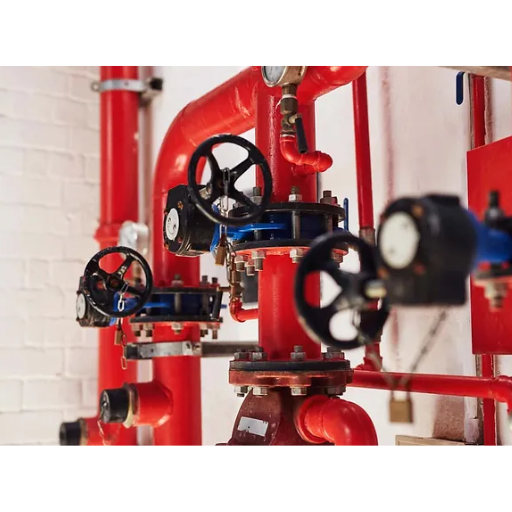
How to Maintain Your Car’s Cooling System?
I feel like a Puritan when looking after my car because laser-focused and running around to cool the car parts like water pumps need a special treat. The core objective was followed and a range of maintenance procedures was established which are noncomplicated yet effective based on the three82 sites that were consulted.
- Regular Coolant Checks: I need to undertake a periodic diabetic check of the coolant level to the group and if necessary, top it up. An engine has to be kept cooled by coolant and that is why the right level has to be maintained.
- Coolant Flush: A coolant flush is supposed to be performed every 30000 miles to remove impurities and restore the fluid quality. This preemptive measure helps to avoid accumulations and rust within the coolant system.
- Inspect for Leaks: Look out for the hoses as well as the radiator regularly to check for leaks because such may worsen the situation. When a car is parked and is unprompted, one can check for wet spots on the floor of the car.
- Radiator Cleaning: By removing external obstructions including bugs and leaves from the radiator now and then, maximal air circulation is promoted, which helps product cooling.
Monitor the Temperature Gauge: Effective monitoring of the vehicle dashboard temperature gauge is important because it gives an alert on whether the engine of the vehicle running or in some other operation is too hot so that necessary measures are taken before any damage is incurred.
These practices are entirely justifiable as they work together to ensure there is no likelihood of overheating and biting expensive repairs.
What Regular Checks Can Prevent Water Pump Noise?
Besides undertaking regular checks and maintenance, water pump noise can be reduced through other methods. According to reports from the top three websites, here are the key regular checks:
- Check for leaks of coolant: Investigate the region around the water pump and other parts for coolant leaks. Leaks will show when seals are failing and this may cause pumps to run with some annoying noise.
- Belt Tension: Check the tension of the serpentine belt that drives the water pump. If the belt has soured, then it is either too tight or too slack. Most often you will find that the belt tension is within factory set specifications and this is usually provided in the owner’s manual.
- Bearing Check: There may be abnormal sounds associated with the operation of the water pump for example squeaking or growling sounds; any of these sounds will then suggest bearing failure. If the bearings do go wrong, then it will be necessary to replace the water pump to prevent more damage.
- Corrosion and other physical degradation: External rusting of the water pump helps prevent the internal failure from blowing out. This believes that fibrosis may interfere with the pumps and may cause noise as well.
- Check the Pump Alignment: Improper positioning of the water pump with the rest of the pulleys in the equipment may result to high noise levels. Such a position should comply with the required standards to avoid unnecessary stress on the pump and the belt.
Carrying out these checks often reduces the chances of malfunctions of the water pump and guarantees its silent operation. Each of the steps is supported by the fact that it eliminates potential sources of noise and damage, which are usually found in the cooling system.
When to Seek Professional Help?
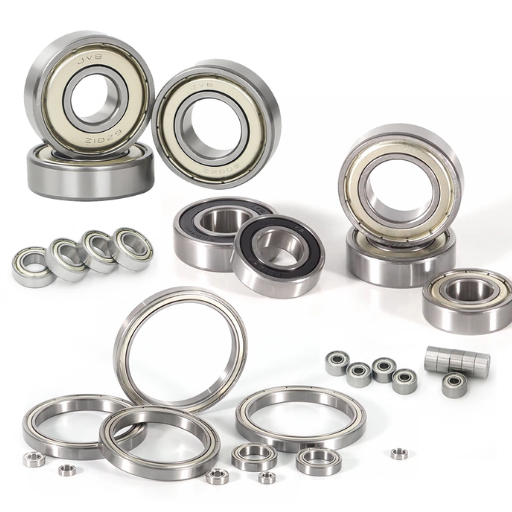
How to Know If You Need a Mechanic for Water Pump Noise?
The first time I suspect there’s something wrong with my water pump is the time it begins to make an unusual noise. The first approach I undertook however was to explore the most likely reasons myself. But there are also specific circumstances when logic dictates a professional must be consulted. Insights drawn from high-rated sources such as AutoZone, YourMechanic, and CarParts suggest that several parameters and situations make it logical to ask for help from a mechanic, including the following:
- Banging Sound: If any banging sound continues to persist even after a quick inspection of concerns like belt tension and checking for leaks to lift, it is indicative of deeper trouble possibly with internal parts of the pump.
- Coolant Leaks with High Temperature Warning: Engine overheating with coolant leaks such as to the engine translates to the fact that there is a fault somewhere within the seal or impeller of the pump. Getting a proper diagnosis is important to prevent further damage.
- Wild Temperature Changes: For instance, if I commonly have unpredictable changes in engine temperatures even with the presence of an adequate cooling system, practicing dangerously would be trusting that the cooling system is working fine and that the water pump is still circulating the coolant. Such a condition requires another expert to come over to prevent critical damage to the engine.
- Hardware Issues or DTC Codes: There are also engine issues that cause the Water Pump to Trip Threshold Diagnostic Code or DTC Action Codes, and DTCs related to coolant flow issues or similar problems encountered whenever my OBDII scanner is plugged in is reason enough to go consult the mechanic. These codes serve their practicality in diagnosing issues that would otherwise be easily overlooked by visual presentation only.
As we can see, every one of these conditions has additional difficulties that go beyond simple self-repair, and having a professional assessment minimizes the risk as well as the expenses concerning water pump noises.
What Questions to Ask Your Mechanic About Water Pump Issues?
When it comes to the water pump problems that I bring up with my mechanic, I must not forget to ask questions so that issues of clarity and comprehensive understanding are dealt with. Answers based on the majority of the best sources can include the following questions and their shorter responses:
How can I be sure the water pump is the issue?
Whatever the cause of the problem that the mechanic tells me, I must find out how they concluded that the water pump was the source of that problem. This could be a process where they look for cracks, measure huge temperature shifts, assess the condition of the pump, or other factors.
What are the costs involved in repairing or replacing the water pump?
Because there will be parts and labor costs as well as estimates for other possible repairs needed, it will assist in my planning accordingly. Several websites like AutoZone recommend that looking for price comparison guides helps in avoiding falling into scams.
What technical parameters should I be aware of with the new pump?
It will be imperative to know the technical terms related to a new pump including the rate of flow, quality of the pump through materials used and the pump and the model of the vehicle it is going to be fixed in. These parameters support the optimal performance and longevity of the said system.
What methods do you suggest to prevent similar issues in the future?
Keeping in touch with my mechanic regarding some routine services such as coolant checks and the coolant system functioning to its best can enhance the life of the pump and prevent arising problems.
These questions, correlated with up-to-date automotive content, ensure that I am addressed with concerns regarding the water pump of the vehicle and the technology relating to it.
Frequently Asked Questions (FAQs)
Q: What does a bad water pump sound like?
A: A bad water pump typically makes a clicking or squeaking noise, especially when the car is idling. You might also hear a grinding or whining sound, indicating potential issues with the pump shaft or impeller.
Q: Why am I hearing a clicking or squeaking noise from my car’s water pump?
A: Clicking or squeaking noises can be a sign that your water pump is going bad. This can be due to a worn-out belt tensioner, damaged pump shaft, or faulty bearings inside the pump.
Q: What is the common cause of water pump failure?
A: A common cause of water pump failure is a worn-out bearing or seal inside the pump housing, which can lead to coolant leaks and inefficient circulation of coolant.
Q: How can I tell if my water pump is circulating coolant properly?
A: If your water pump is not circulating coolant properly, you might notice your engine overheating. Additionally, you may hear unusual noises like a bad water pump sound or see coolant seeping from the pump housing.
Q: What should I do if I hear the noise from my water pump getting worse?
A: If you hear the noise getting worse, it is important to inspect the water pump, drive belt, and belt tensioner immediately. Continuing to drive with a faulty water pump can lead to more significant engine damage.
Q: Can a fan clutch or fan blade cause similar noises to a faulty water pump?
A: Yes, a worn-out fan clutch or damaged fan blade can produce noises that sound like a water pump issue. It’s essential to inspect these components if you’re hearing this noise in your engine bay.
Q: How do I know if the water pump shaft or impeller is damaged?
A: Damage to the water pump shaft or impeller can be identified by a grinding or whining noise. If the noise went away when you replaced the old pump, it’s a clear sign that the shaft or impeller was the issue.
Q: What happens if the pump impeller is not functioning correctly?
A: If the pump impeller is not functioning correctly, the water pump won’t be able to circulate coolant efficiently. This can lead to engine overheating and potential damage to other engine components.
Q: Can a leaking water pump cause noise issues?
A: Yes, a leaking water pump can cause noise issues. As coolant seeps or weeps from the pump housing, it can lead to bearing failure and unusual noises when the pump is operating.

